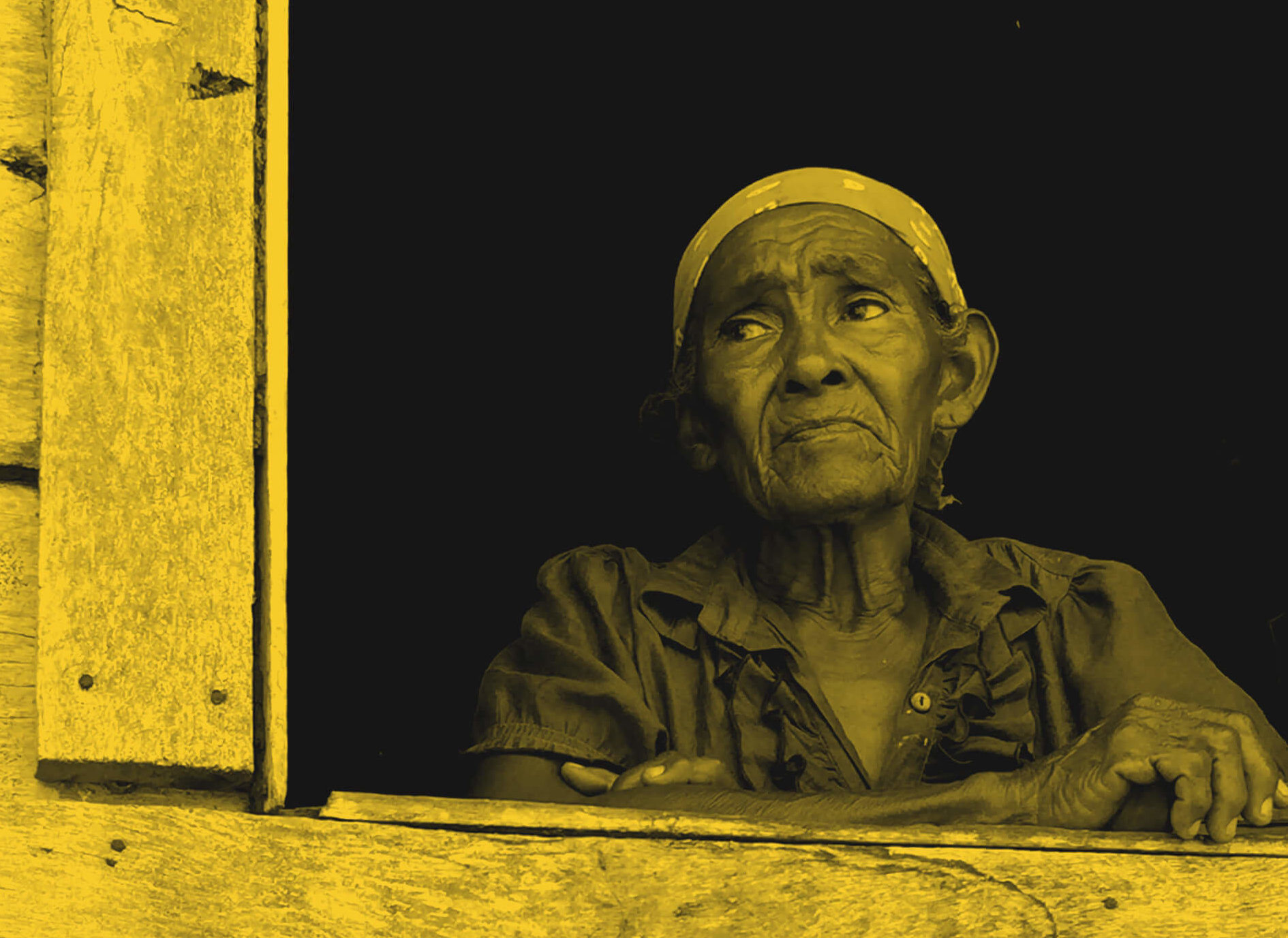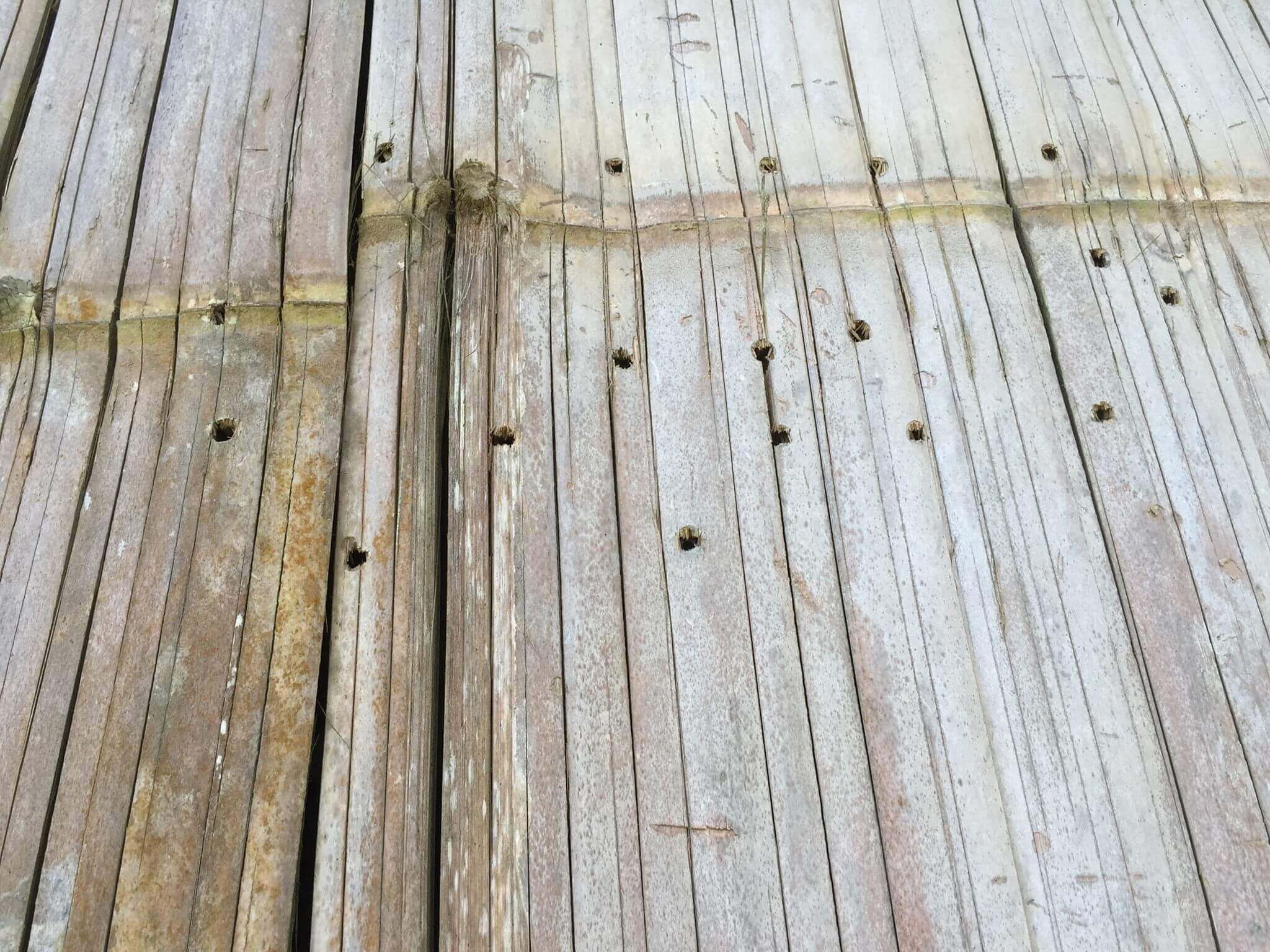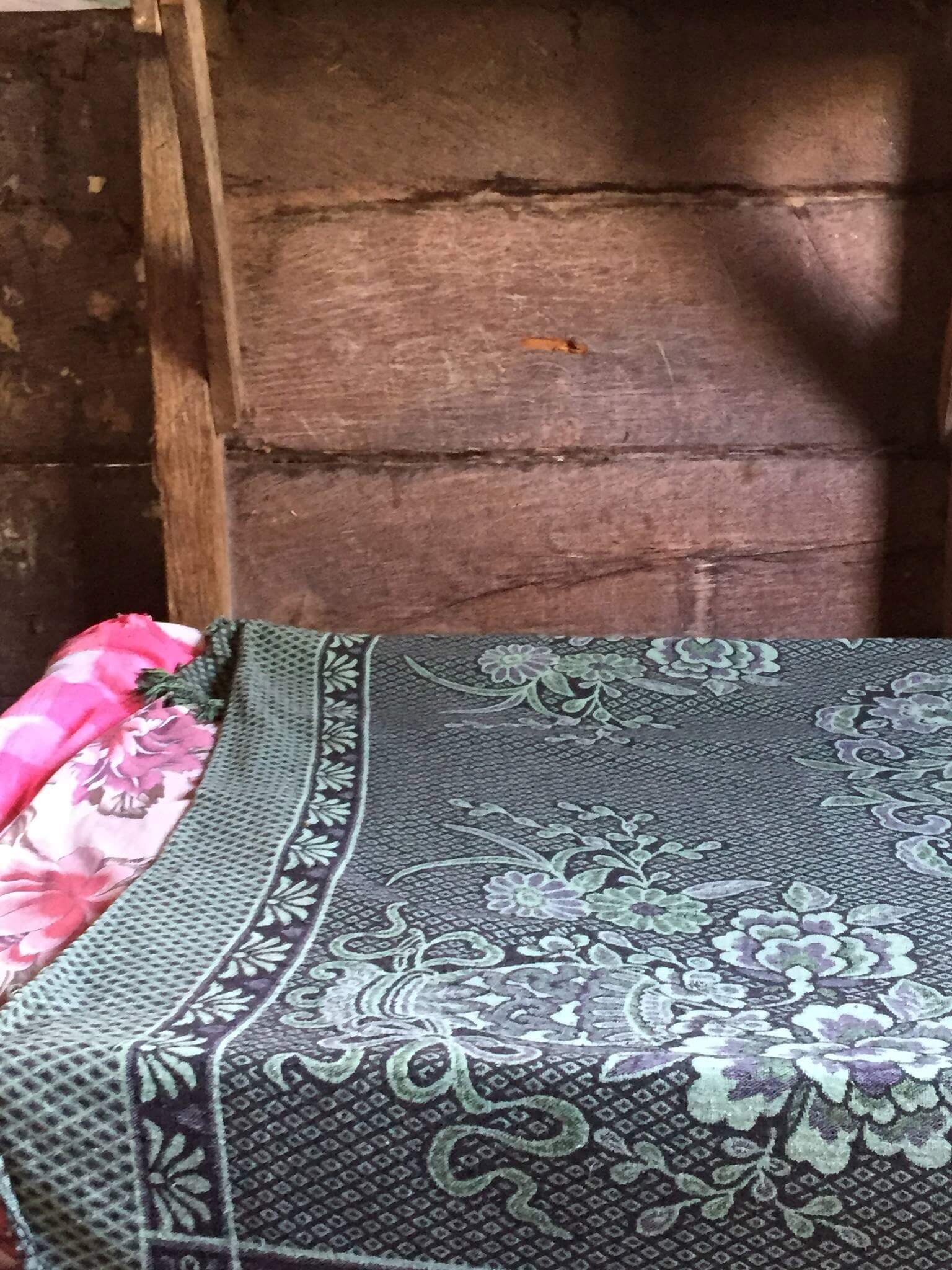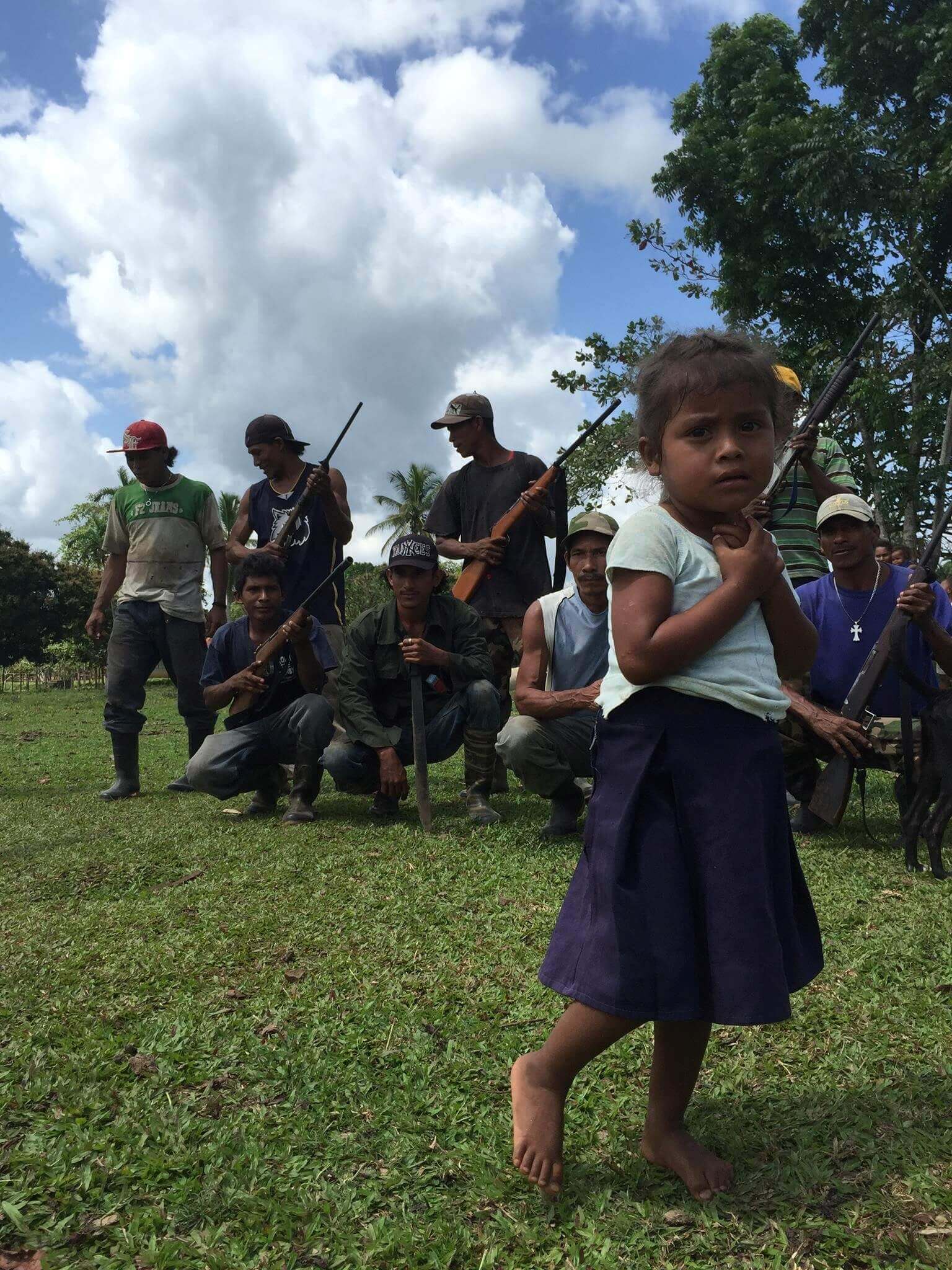
IC has been reporting for almost exactly two years now on the escalating state-sponsored violence in Nicaragua, while many otherwise informed people remained stubbornly, loyally, and piously in denial – clinging to the romantic Sandinista, anti-imperialist, revolutionary narrative… It’s charming; it really is. And, that’s why it has become so dangerous.
The recent mass uprising in Nicaragua is youth-led with decentralized leadership, much like the ‘Occupy Movement’ to the north – and, it has received some of the same criticism of the Occupy Movement regarding the lack of organized leadership. Yet, who is to blame a generation who grew up under a growing dictatorship for wanting their movement to be proactively more egalitarian, in practice not just propaganda?
Many of the original Sandinista fighters are the ones who are losing their retirement pensions right now; there is a broad consensus that the Ortega-Murrillo family dynasty does not embody the original Sandinista values and ideologies.
The mass current mobilization has even been termed a ‘Nicaraguan Spring’ – which fully transcends any standard dichotomy between the ‘left’ and the ‘right’. It is challenging not just a dictatorship, but entrenched ideas about an ideologue figurehead who has concentrated power within his personal family to dangerous extremes and has support networks throughout the ‘pink tide’ socialist countries of Latin America as well as with Russia, and possibly even China and Iran1.
The renewed imperialist presence of Russia in Nicaragua – which is impossible to neatly abstract in terms of its impact on the current political climate – poses increased threats as well. Russia has been participating in an ongoing process to remilitarize Nicaragua; and, such activity has long been recognized by regional analysts as potential preparation for this current mass dissent. How Russia’s role there will evolve in this context is somewhat worrisome and hard to predict. Their alliance with the otherwise impoverished country is more important to them than might be assumed.
Hence, Putin has in recent years: initiated a new ‘drug war’ on the ground there; provided ‘security’ for developments in President Daniel Ortega’s infamous plans to build an inter-oceanic canal with the help of a Chinese billionaire; and, has installed a secretive ‘surveillance center’ with satellite capabilities to monitor activity in almost all – if not all – of the Americas. Even people who live and work in the surrounding area of the center in Nicaragua do not seem to understand its true or full purpose.
At risk of burying the lede, it was important to consolidate some context for the Indigenous struggles in Moskitia (an autonomous, pluri-ethnic region which Nicaragua has a complicated relationship with…to put it lightly) which have been simmering at a slower, but consistently oppressive and violent, burn for years now.
This ‘complicated relationship’ included recent accusations that the Nicaraguan government willfully allowed a large chunk of traditional Indigenous (and uniquely biodiverse) territory of tropical rainforest to burn without proper response. The Nicaraguan government turned down help from neighboring Costa Rica to put out the massive forest fire. Many attributed this to a continuance of their longstanding efforts to expand the agricultural frontier into the autonomous Indigenous territory which is home to the second largest tropical rainforest in the Western Hemisphere – considered the ‘lungs of Central America’.
The impact of the loss of this rainforest cannot be understated. And, amid the chaos surrounding the massive fire, there were reports of roads being built into previously respected, and lawfully protected Indigenous Rama territory, which would in the future further facilitate resource extraction activity on their land.
How does all this tie into state propaganda about mental health?
To begin unpacking that, in February of 2018, the pan-South American socialist state-run, media outlet, TeleSUR, ran an article claiming that a “mysterious madness was crippling” Indigenous Peoples in this region where Sandinista forces have been trying to nationalize and gain control of the vast natural resources for decades.
The article – and its premise – was beyond tacky, especially considering the deep and nuanced political undertones it was attempting to manipulate.
According to TeleSUR, “Nicaraguan anthropologists insist traditional techniques are best to treat the ‘grisi siknis’ outbreak; and, “Western medicinal treatments” cannot cure it.
At first blush, it all may sound really noble and anti-imperialist…until one realizes they are, on one point, attempting to displace the region and Peoples’ historic and autonomous relationship with the United States – which was advocated for by the late (AIM) American Indian Movement leader, Russell Means.
As recently as 2013, Mayanga and Miskito Peoples in the region called on President Barack Obama for support in their fight to preserve their ancestral territories and the crucially biodiverse tropical rainforest.
During the Contra Wars, the U.S. also provided limited support to the Miskito, who were defending their ancestral territory from the Sandinista (and in some instances fleeing to refugee camps in Honduras – a practice which has unfortunately resumed in recent years and is perhaps escalating conflicts now – according to claims in another recent TeleSUR article which could not be independently verified — with Honduran authorities).
As Means put it, here was a chance for the U.S. government to: “For the first time in its history…ally itself with an Indian cause”.
Means also described Moskitia’s struggle against the Sandinista which was happening on the sidelines of the Contra-Sandinista (U.S.-Russia proxy) war as, “the foremost struggle for indigenous sovereignty in the world.”
Back to the recent propaganda of note…While it implies on the surface that the Nicaraguan state is validating a traditional Indigenous healing approach where there has been an ‘outbreak of insanity’… if one reads further, the article doesn’t actually concede that traditional medicine – as it is implemented by traditional regional healers – is wholly sufficient, either…
According to the article, it took a Nicaraguan physician who had studied Indigenous cures, for it to be properly treated – by him, of course.
A ‘western psychologist’, interestingly, might diagnose the symptoms of ‘grisi siknis’ as a unique form of PTSD (post-traumatic stress disorder). The Indigenous Peoples of the region have surely endured more than their share of trauma at the hands of the now ruling FSLN party in recent decades – which, again, has come to a significant head in the past month of country-wide unrest.
With this in mind, it becomes apparent there is a form of ‘gaslighting’ (manipulative psychological abuse which Psychology Today describes as a tool of dictators) happening in this state-sponsored propaganda.
In Moskitia, ‘grisi siknis’ is recognized by traditional healers as a behavioral contagion limited to the isolated communities in the region. The communities have been long isolated as they endured many forms of ongoing attacks; and, while the manifestation of a unique set of post-traumatic stress symptoms – or, what is perhaps better described as an impact of ongoing traumatic stress – can be viewed in either more clinical or more holistic terms, if one’s worldview encompassed the overall phenomenon in purely ‘supernatural’ terms (as at least some Indigenous Miskito Indigenous healers do), then through this lens it would take on an optic of all-out spiritual warfare. And for many Miskito, it does.

Bullet holes from an assault rifle attack on the home of the Indigenous Miskito Elder, pictured above. Colonos arrive in the territories with sophisticated weaponry which many Miskito claim to bear serial numbers traceable to the Nicaraguan government. (Photo: Courtney Parker, 2016)
It is disturbing to ponder how many people may have been manipulated to internalize this grotesque attempt at ‘gaslighting’ the Miskito Peoples. The article attempts to confer to the masses that ‘collective madness’ is just somehow ‘common’ among this particular Indigenous group.
‘This particular Indigenous group’ – the Miskito – just also happen to be the most politically organized, out of all other Indigenous or other ethnic groups in the pluri-ethnic autonomous region of Moskitia, or elsewhere in Nicaragua.
Their political party, YATAMA – which is an acronym which translates into English as ‘Sons of Mother Earth’ – is one of the only remaining strongholds of opposition to the FSLN in that region (which some have estimated holds up to or above 80% of the colonial borders of Nicaragua’s remaining natural resources, which the region’s Indigenous Peoples have stewarded and protected during their long-standing tenure there).
While it is true that symptoms of the culturally specific designated mental illness include panic and are often accompanied by acts (or delusional attempted acts) of violence – more specifically, they are often attempts at defense from an unseen attacker. What the article doesn’t say is that this behavior is being exhibited in a community that has long suffered ‘invisible’ (to the rest of the country and world) acts of violence from settler and state forces.
 A bullet grazed right over the head of the Indigenous Miskito elder pictured above during the attack from Colonos in 2015. The attackers promised to return and inflict more deadly violence if they did not vacate their lands and home. (Photo: Courtney Parker 2016)
A bullet grazed right over the head of the Indigenous Miskito elder pictured above during the attack from Colonos in 2015. The attackers promised to return and inflict more deadly violence if they did not vacate their lands and home. (Photo: Courtney Parker 2016)
In this manner, the propaganda present in the TeleSUR article was also an attempt to legitimize the ongoing colonization efforts from settlers known as ‘Colonos’ (which translates simply from Spanish to ‘colonizers’) who arrive from the country’s interior regions or the Pacific coast. In recent years, these armed intruders have placed the frontier areas under a violent siege, sometimes claiming illegal land deeds – even though all property in Moskitia is communal – to the legally autonomous territories.
The framing of this mental health issue — which is considered unique to Miskito communities — deflects attention from the intolerable acts of violence the settlers routinely commit. It is further, an ostensibly blatant attempt at collective ‘victim blaming’.
It seems painfully obvious that the news outlet, which receives direct fiscal support from the Nicaraguan state, is trying to delegitimize the most politically powerful group of Indigenous Peoples – who are, again, the main challenge to the FSLN dictatorship in the region – who have no choice but to fight back against the heavily armed intruders to protect their families, communities, and sacred, ancestral (and legal) territories, and portray them as (or worse, convince them they are) ‘crazy’ and/or ‘insanely and unreasonably violent’.
 A young Miskito girl in a frontier community stands in front of a group of community defenders who have been forced to take up primitive, make-shift weapons as they attempt to defend their families, land, culture, and the carbon-mitigating rainforest. (Photo: Courtney Parker, 2016)
A young Miskito girl in a frontier community stands in front of a group of community defenders who have been forced to take up primitive, make-shift weapons as they attempt to defend their families, land, culture, and the carbon-mitigating rainforest. (Photo: Courtney Parker, 2016)
IC spoke with a family who had recently fled the frontier community of Santa Clara while in Bilwi, where they had recently been displaced to, in 2016. They described how hard it was to make a living and feed their family in the more urban area of Bilwi (also known as Puerto Cabezas).
While Bilwi is also home to a more ‘urbanized’ – or ‘urban-acclimated’ – population of Miskito Peoples, the refugees from the frontier are used to being able to live off the land and provide for their own food and shelter from it. Some individuals in the incoming waves of refugees have never used money; many children arrive without shoes; and, numerous children and adults speak only their Native tongue and no, or limited, Spanish.
Prior to the mass, country-wide uprising, there was a huge shake-up (which IC also covered) and outright revolt surrounding charges of electoral fraud waged on the FSLN after recent elections in Moskitia. One IC contributor recently documented the claims through independent sources. Investigations into the full extent of the fraud and activities amounting to voter suppression are still underway.
During this time, one of the only Miskito-speaking media outlets – the YATAMA political party’s community radio station – was burned to the ground by ‘Sandinista youth gangs’.
These such ‘gangs’ are now being recognized as state-sponsored paramilitaries by Nicaraguan analysts, as their violent and focused (it is said, directed) activities have become more widely scrutinized while they continue to inflict terror upon expanded regions across Nicaragua at this time.
For now, it is important that as the international human rights bodies are looking to Nicaragua – finally – and seeing the true nature of the Ortega-Murillo dictatorship… that they be reminded of the still marginalized struggle of the Indigenous Peoples and other ethnic groups residing in Moskitia, in the Northern Caribbean coastal area.
It was here that the journalist, Angel Eduardo Gahona, was shot in the head while live-streaming the country-wide protests in Bluefields, Moskitia. The incident made international news, but with no recognition of how this shocking act of violence, amidst the recent gross abuses of government force, occurred in the traditionally Indigenous-led, pluri-ethnic, autonomous region which has a name of its own: La Moskitia2.
On a final and sobering note, two men have been arrested and transported to the capital city of Managua – charged with the assassination of Gahona. They are two Creole men, native to Moskitia, named Brandon Lovo and Glen Slate.
According to the Knight Center for Journalism in the Americas, the victim’s own family is protesting this accusation and related charges. Members of the family have claimed the only people within range to shoot Gahona that night were Nicaraguan militarized state police – who had recently trumped up their presence in the region following the unrest after the fraudulent election, even before the countrywide protests commenced.
Juan Gahona told the Knight Center:
“Personally, I rule out any possibility I can link these guys to Angel’s murder. Why do they have to take them to Managua? The certain thing is that they transfer them, torture them […] and make them say things that aren’t, out of fear, because of threats”.
Amnesty International released a new report on another massive outbreak of deadly violence from government forces and paramilitaries (as Nicaraguan analysts have come to call some pro-government mobs) on student protesters, Monday, May 29, 2018. Find their latest assessment of the situation, here.
2 Traditional linguists insist it is more proper to spell it as ‘La Muskitia’, on grounds that there was no ‘o’ sound in the most ancient version of the Native tongue, but the above spelling has been largely embraced by its inhabitants.

Indigenous Peoples are putting their bodies on the line and it's our responsibility to make sure you know why. That takes time, expertise and resources - and we're up against a constant tide of misinformation and distorted coverage. By supporting IC you're empowering the kind of journalism we need, at the moment we need it most.